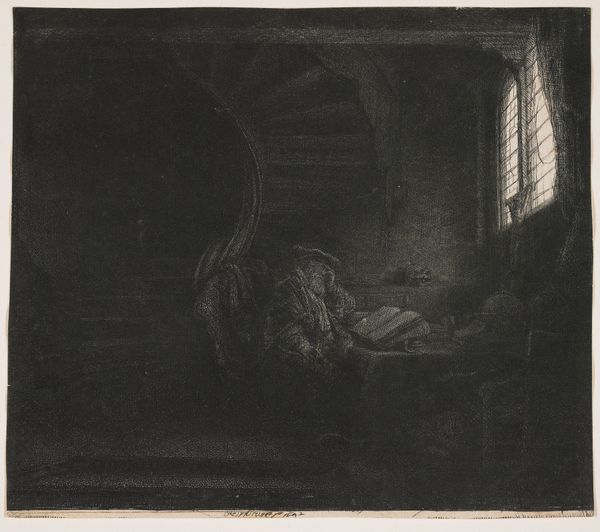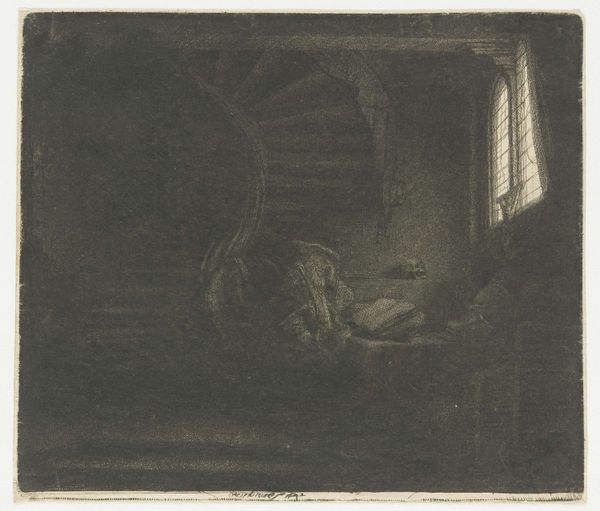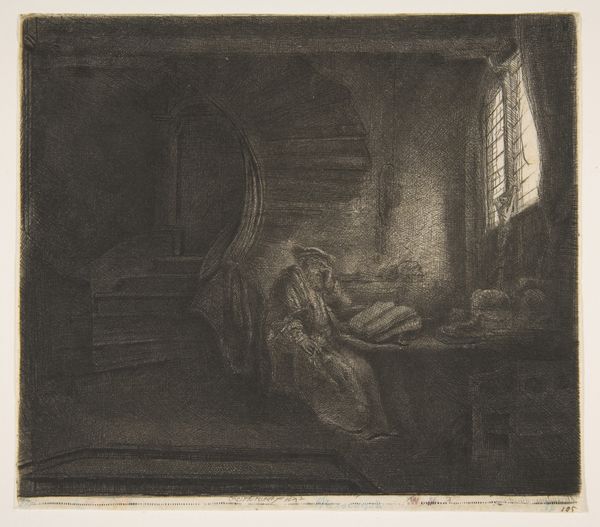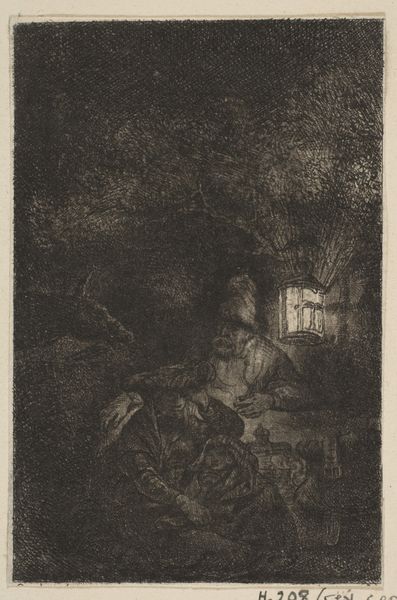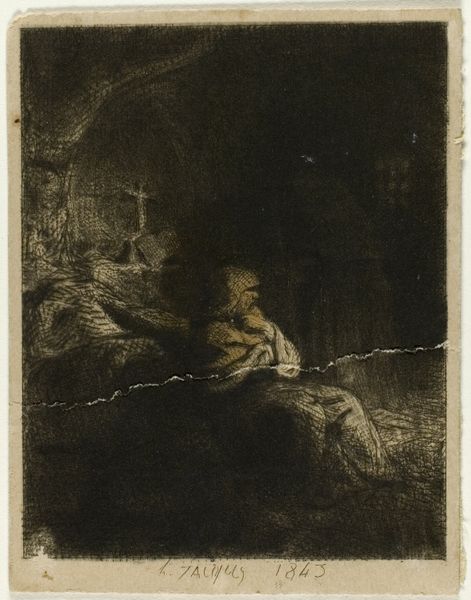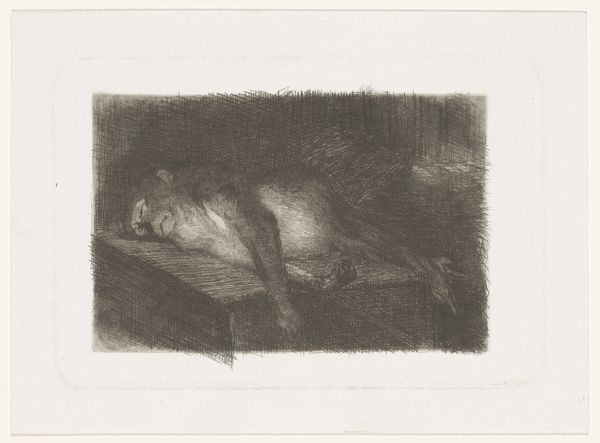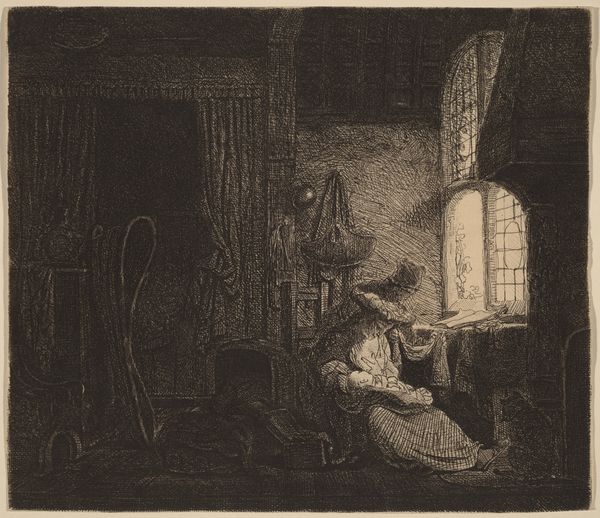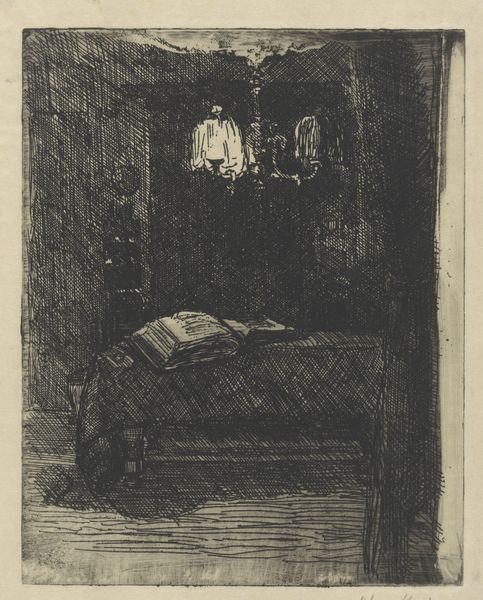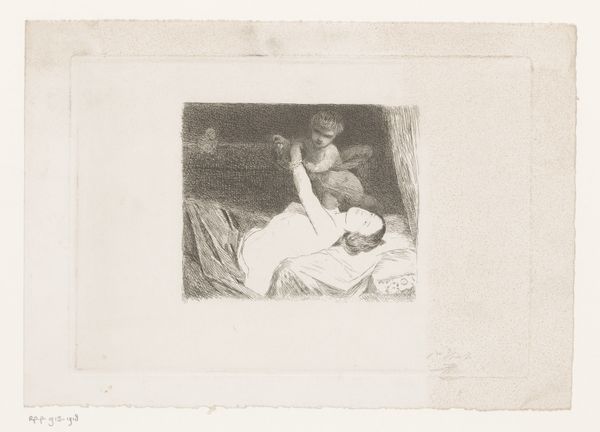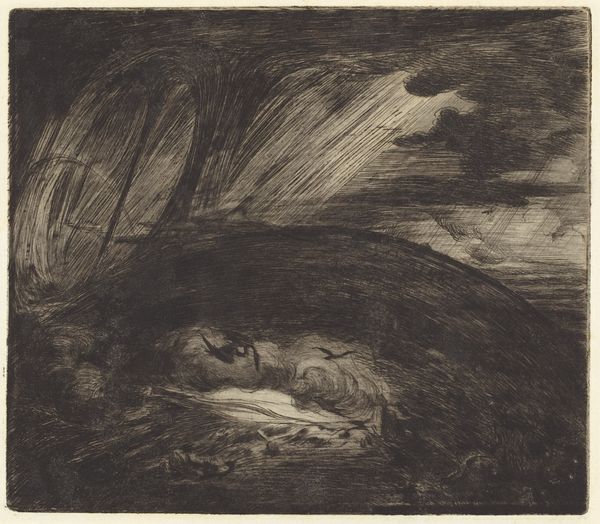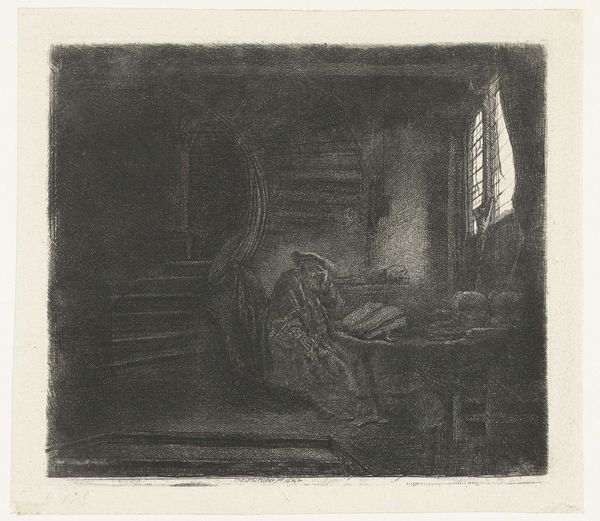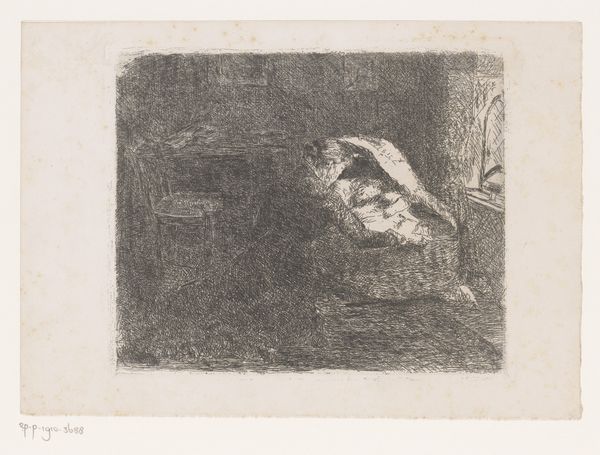
#
photo of handprinted image
#
light pencil work
#
natural tone
#
organic shape
#
charcoal drawing
#
possibly oil pastel
#
charcoal art
#
charcoal
#
watercolor
#
shadow overcast
Dimensions: height 152 mm, width 174 mm
Copyright: Rijks Museum: Open Domain
Rembrandt van Rijn made this etching of Saint Jerome in a dark chamber, sometime in the mid-17th century. It captures the scholar in a moment of quiet contemplation, bathed in soft light, a common theme in Dutch Golden Age art. But look at how the image creates meaning. The strategic use of light and shadow in this print isn't just aesthetic, it’s a reflection of the cultural and religious environment in which Rembrandt was working. In the Dutch Republic, the Protestant Reformation had changed the way religious figures were viewed. Instead of grand displays of power, there was a focus on personal piety. Rembrandt was very interested in the changing attitudes and values of his time. His depiction of Saint Jerome is less about the saint's status, and more about his humanity, his intellect, and his private devotion. To fully understand this work, we need to consider not just Rembrandt's style, but also the social and religious context of the Dutch Golden Age. Research into period literature, religious texts, and the history of the Dutch Republic can help us understand this work more deeply.
Comments
No comments
Be the first to comment and join the conversation on the ultimate creative platform.
